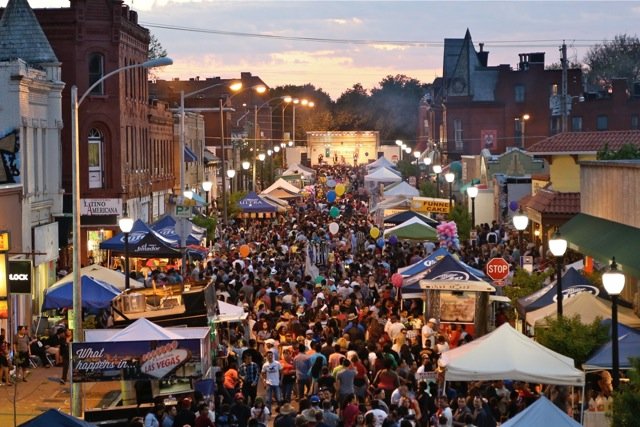Cinco de mayo:
a Cherokee Street festival
Established over 15 years ago by the street’s Mexican business community, the festival is now organized by Cherokee Street Foundation, a nonprofit that seeks to bring Cherokee Street to life by hosting authentic and unforgettable events. This festival brings together over 50,000 attendees to celebrate the rich, multicultural and spirited, eclectic community within the Cherokee Street neighborhood and surrounding south St. Louis area.
An annual tradition, with a long history, Cinco De Mayo: A Cherokee Street Festival has evolved into a celebration of community and one of the largest and most diverse festivals in the St. Louis area.
This year 2025 Cinco De Mayo Festival will take place on Saturday, May 3rd, 2025 from 11-8:00pm on Cherokee Street, between Nebraska & Jefferson. The festival will pack Cherokee Street with people enjoying authentic food, drinks, music, entertainment. We strive to support as many artist as possible through this event, focusing on diverse talent that reflects the attendees and multicultural backgrounds of the artist and residents that are part of this community.
KNOW YOUR CINCO HISTORY
By now, many Americans understand that Cinco de Mayo is not the celebration of Mexican Independence Day (which falls on Sept. 16). It is, however, the commemoration of The Battle of Puebla, a day in which an outnumbered Mexican army defeated an invading Imperialist France in the city of Puebla, 62 years after Mexico had declared its independence from the Spanish. Cinco de Mayo is seldom celebrated in Mexico, except for the city of Puebla, in which the event took place.
(This TIME story goes in detail about what led to the conflict and the role of Mexico and this battle in the American Civil War)
Before the commercialization of Cinco de Mayo, Mexican-Americans – living in the middle of the civil rights struggles of the 50s and 60s – embraced and began celebrating Cinco de Mayo as a show of pride for their Mexican culture, primarily through the Chicano activist culture of southern California, but later spreading throughout the U.S.
-Carlos Restrepo





